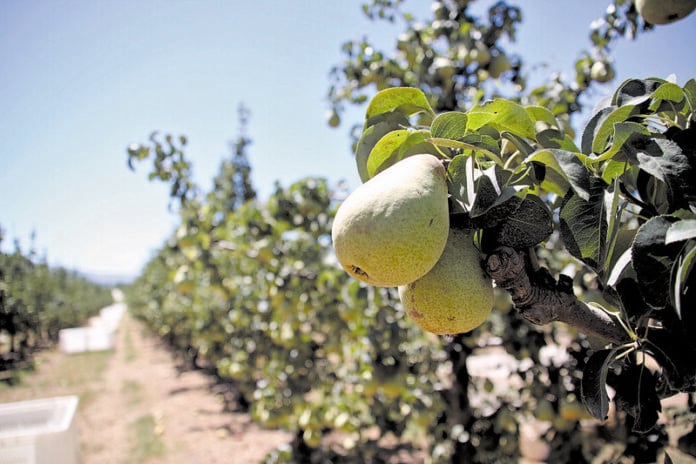Portugal’s history as an official country stretches back almost 900 years, and a study in 2020 revealed that modern humans settled in what is now central Portugal as far back as 41,000 years ago! This long history resulted in entrenched agricultural methods with food preparation passing from generation to generation and perfecting the art of certain practices over time. Portugal’s most famous food – the pastel de nata – was created before the 18th century by Catholic monks in Lisbon’s Jerónimos Monastery. As of 2021, Portugal had 94 food and drink products granted a Protected Designation of Origin (PDO). Let’s look at 9 of the best Portuguese foods and dishes with PDO status that are still under the radar compared to bacalhau and francesinha. You may want to take some home with you on your next trip to Portugal!
1. Ameixa d’Elvas (Elvas Plums)
The Ameixa d’Elvas is a green, oval-shaped plum known locally as Abrunho. It is believed that it came from France and has been popular since the time of Prince Alphonse Henry, the first king of Portugal. In 1834, José Guerra began to grow these plums on a large scale. Ameixa plums won a bronze medal at the 1855 Paris Exhibition, and, by 1875, they started being exported around the world. In just under 150 years, the Elvas plums have received 203 international and national prizes. Give them a try on your next trip to Portugal and then bring some jarred plums home with you!
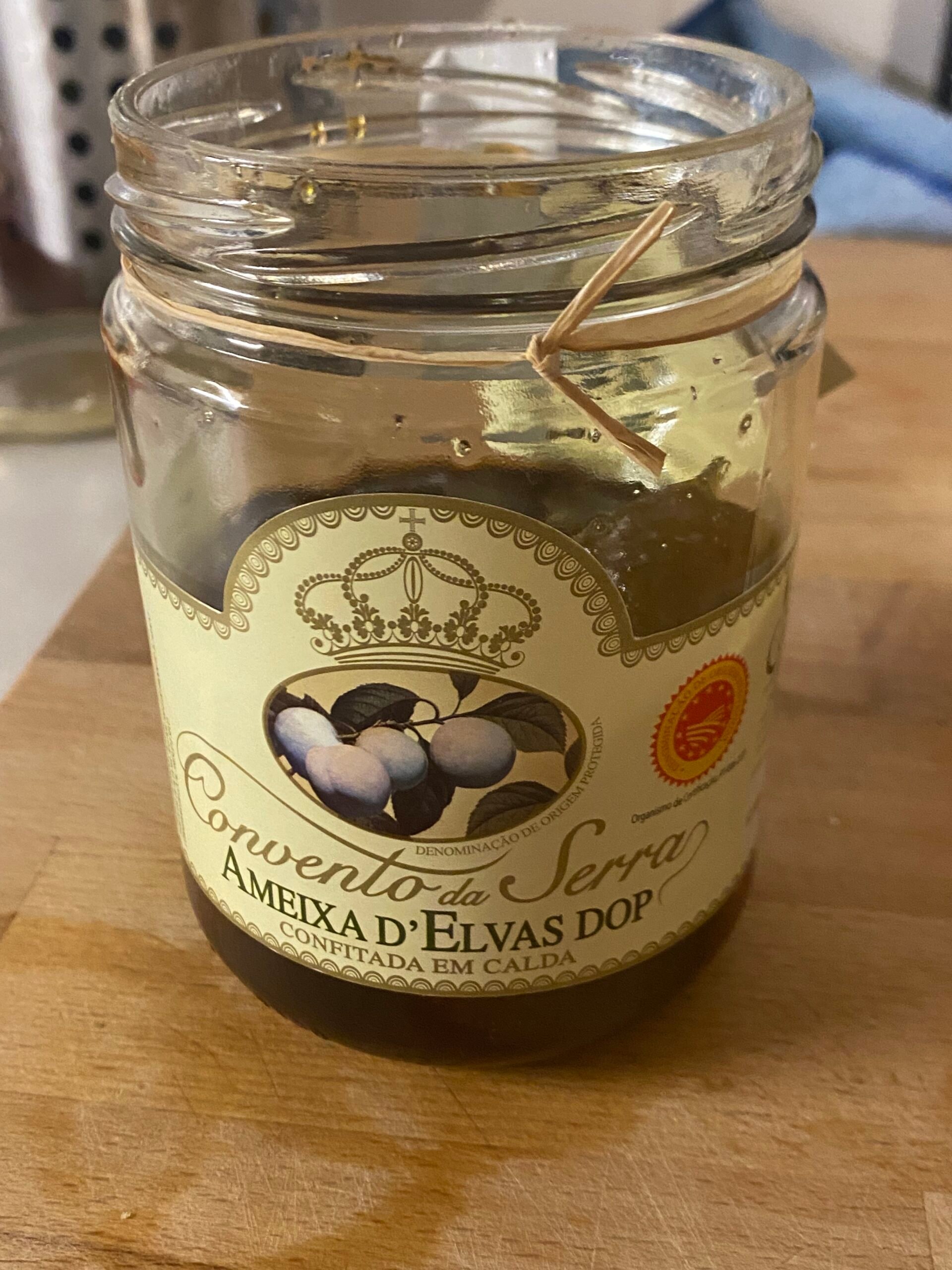
2. Azeite de Moura (Moura Olive Oil)
“Azeite de Moura” is a distinguished extra-virgin and virgin olive oil produced from Galega, Verdeal, and Cordovil olives. This oil is characterized by its unique chemical and sensory properties. The composition includes up to 20% Verdeal, a minimum of 35-40% Cordovil, and the remainder Galega.
Harvested at full ripeness, the olives are processed within 48 hours to maintain quality. The oil is yellow-green with a fruity aroma and rich in monounsaturated fatty acids. Produced in Moura and surrounding areas, the region’s Mediterranean climate and soil create a distinct olive oil, which has been celebrated since Roman times.
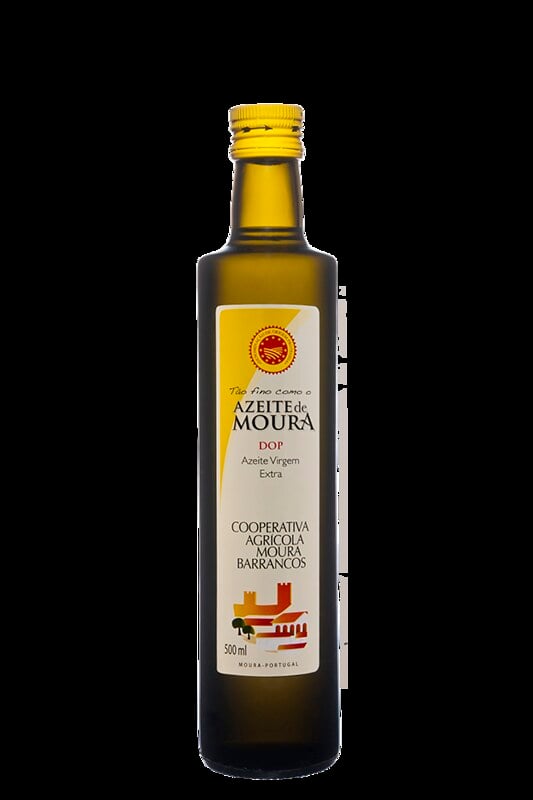
3. Castanha da Terra Fria
Castanha da Terra Fria PDO refers to the chestnuts of Castanea sativa Mill, including varieties such as Longal, Judia, Côta, Amarelal, and others. Each batch contains 85% of one variety, with the rest comprising other listed varieties. These chestnuts can be pounded, frozen, candied, or preserved in syrup under the PDO designation.
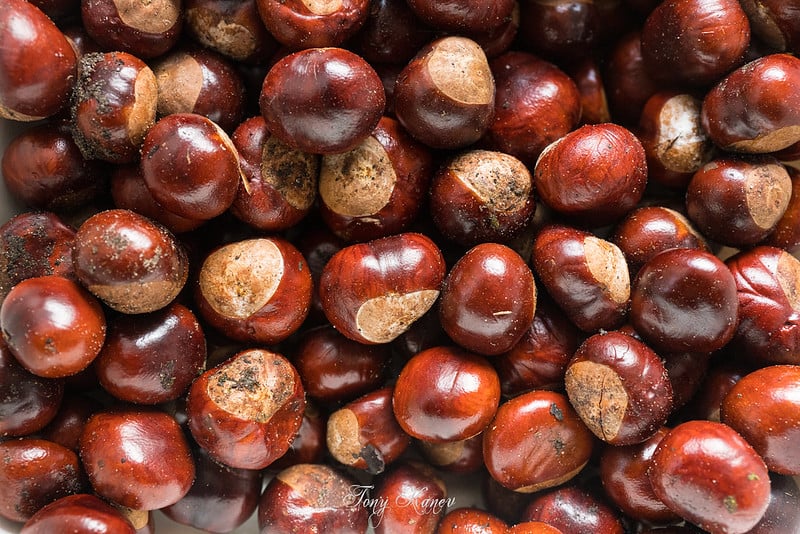
The chestnuts are harvested by hand from the ground to ensure complete maturation, with no mechanical methods used. They are characterized by their elongated elliptical shape, reddish-brown shiny color, and long dark lines. With 70 to 95 nuts per kilogram, these chestnuts are known for their intense flavor. Production is limited to specific parishes in Vila Real and Bragança.
The Castanha da Terra Fria PDO has deep historical roots in its region, and they were vital for the survival of local rural communities. The chestnut tree was crucial for nourishment in Roman times, long before the introduction of potatoes to Portugal in 1789.
4. Manteiga dos Açores (Azorean Butter)
“Manteiga dos Açores” is butter made exclusively from pasteurized cow’s milk cream from the Azores, without lactic fermentation, food coloring, or preservatives. It boasts an intense color, aroma, and fresh taste due to its high betacarotene content. The butter’s unique qualities stem from cows grazing year-round on Azorean pastures. Produced and packaged in the Azores, this butter has been popular since the 16th century. By 1896, Azorean butter was already a commercial success, with a good amount of sales by the Leopoldina dairy factory.
5. Mel da Serra de Monchique (Honey from Serra de Monchique)
The Mel da Serra de Monchique PDO is a honey produced by Apis mellifera Iberica bees, sourced from the nectar of local flowers such as lavender, heather, eucalyptus, orange blossom, and medronho (the strawberry tree). This honey, characterized by its dark yellow color and delicate flavor, is rich in natural mineral salts and features a slight bitter aftertaste from the medronho pollen.
Produced without artificial feeding, the honey is harvested between May and July and purified through filtering and centrifugation. This process ensures that Mel da Serra de Monchique PDO retains its unique qualities. Beekeeping in this region dates back to the 17th and 18th centuries when it was a primary income source. It was introduced and promoted by the Romans in the Algarve.
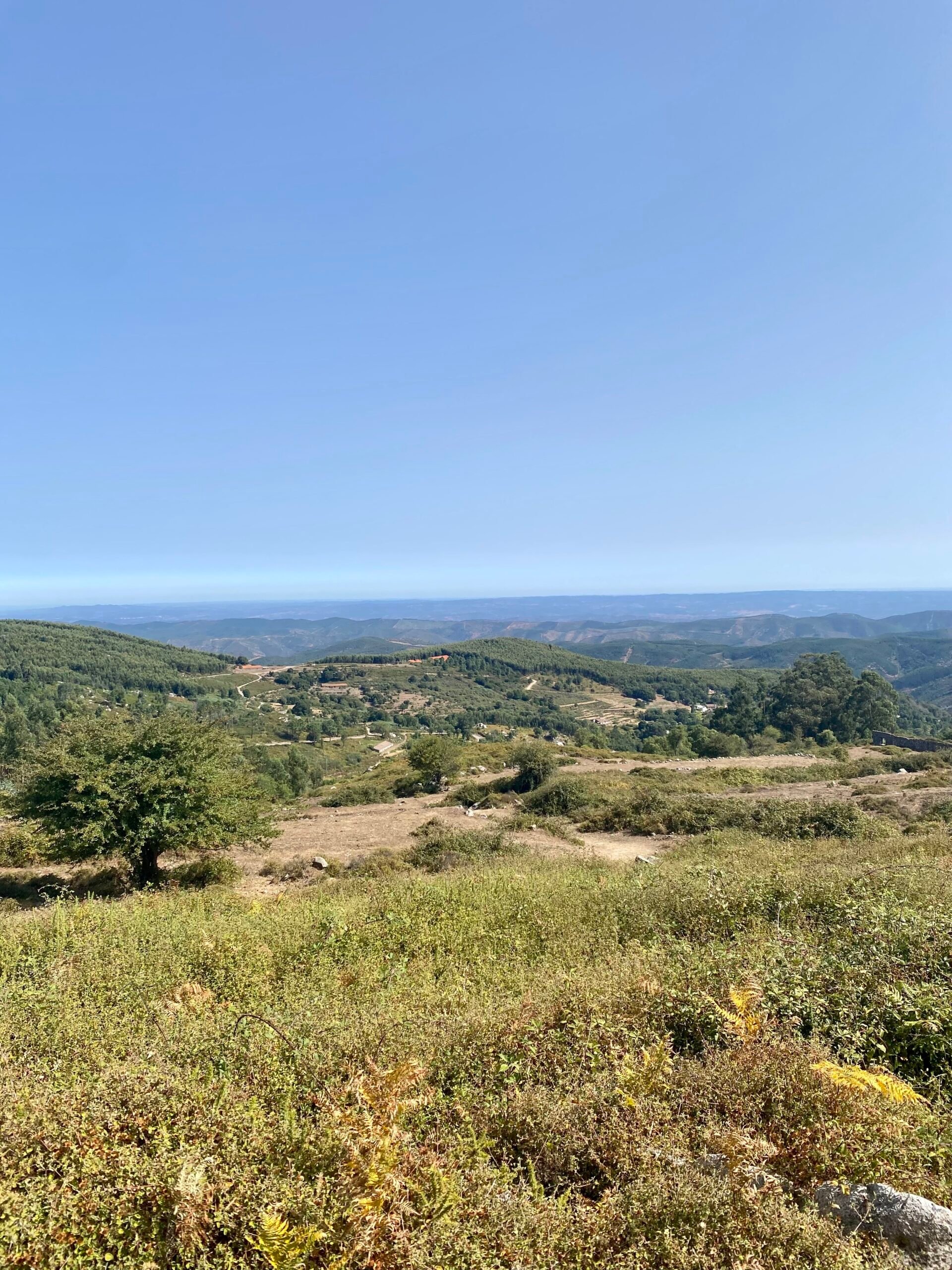
6. Pêra Rocha do Oeste (Rocha Pear of the West)
Pera Rocha do Oeste is a pear variety, Pyrus communis L., originating from the Rocha variety in the Sintra commune around 150 years ago. This Portuguese pear has white, sweet, non-acidic, juicy flesh with a soft texture and distinctive aroma. Cultivated in the west region, it thrives under specific local conditions and requires winter cold to develop properly.
Harvested in late August, its production area includes Sintra and surrounding communes. The pear’s cultivation spread from a natural tree on Mr. Rocha’s farm and earned a recognition at the 1932 National Congress on Pomology.
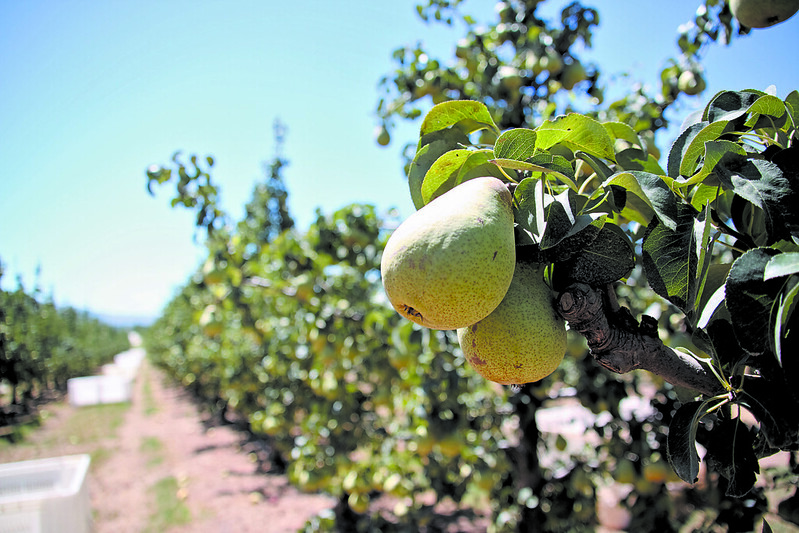
7. Sal de Tavira (Tavira Salt)
Sal de Tavira / Flor de Sal de Tavira PDO is a manually harvested sea salt from the Tavira salterns in the Atlantic Ocean. This unrefined, additive-free salt is available as Sal de Tavira PDO, which forms breakable cubic crystals, or as Flor de Sal de Tavira, which consists of fine, alternating layers that easily disintegrate into fine crystals.
The production involves three areas: storage for water and impurity decanting, evaporation for salt concentration, and crystallization for manual salt collection. Rich in sodium chloride, iodine, and oligoelements, this salt is harvested without washing or additives. Tavira’s salt production dates back to at least the 4th century BC, and it was integral to food preservation and fishery activities. Despite industrial declines, traditional salt production methods have been preserved through generations.

8. Queijo Serra da Estrela (Serra da Estrela Cheese)
Queijo Serra da Estrela PDO cheese is crafted from the milk of Bordaleira Serra da Estrela and Churra Mondegueira sheep. It is a cured cheese, available in two forms: the semi-soft, white-yellowish Queijo Serra da Estrela, and the semi-hard to extra-hard, brownish-orange Queijo Serra da Estrela Velho. The cheese is renowned for its delicate, clean, slightly acidic flavor and pleasant, persistent, slightly spicy taste. It is the oldest Portuguese cheese recognized internationally for its taste and quality.
The production process begins with sheep milking, followed by milk filtration, heating, and salting. Thistle flower Cynara cardunculus is added to form curd, which is manually cut and filtered. After molding, pressing, and salting, the cheese undergoes two maturation phases, totaling up to 45 days for Queijo Serra da Estrela and 120 days for Queijo Serra da Estrela Velho. This cheese, deeply rooted in Serra da Estrela’s hills, has been internationally recognized since Roman times and mentioned in medieval literature. It reached Lisbon and Porto in 1885 and provided a nutritious food source for the great explorers on their voyages.
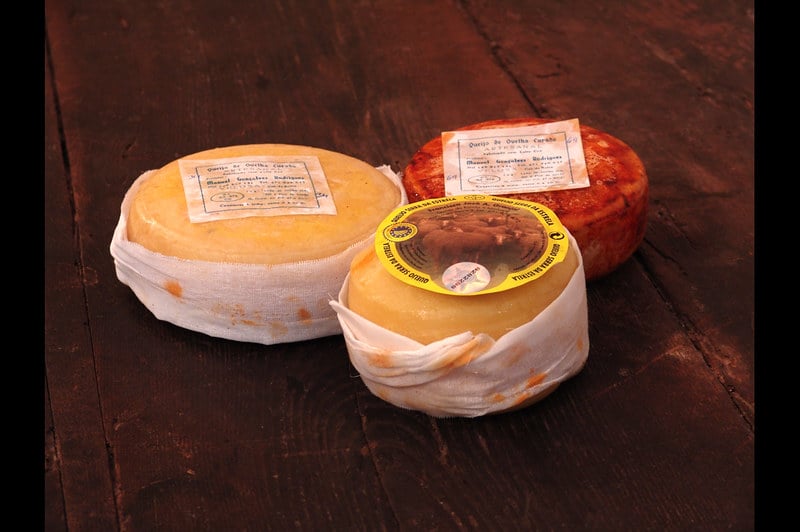
9. Requeijão Serra da Estrela
Requeijão Serra da Estrela PDO is a creamy, slightly lumpy cheese made from the whey of Serra da Estrela cheese. It uses raw milk from Bordaleira Serra da Estrela and Churra Mondegueira sheep, occasionally incorporating milk from Serrana or Jarmelista goats. Shaped like a rough cylinder and weighing 150 to 400 grams, this white cheese is consistent, easy to cut, and melts in the mouth with an agreeable taste and aroma. It received its DOP distinction in 2005.
The production involves heating the whey, sometimes with added sheep’s milk, to precipitate the proteins, forming ‘flakes’ that are skimmed or sieved. Traditionally collected in chestnut branch baskets, these flakes are now gathered in inert containers. Requeijão Serra da Estrela PDO is appreciated for its high protein and low-fat content and can be enjoyed alone or with various accompaniments. It is produced in several municipalities across the Viseu, Coimbra, Guarda, and Castelo Branco districts.

